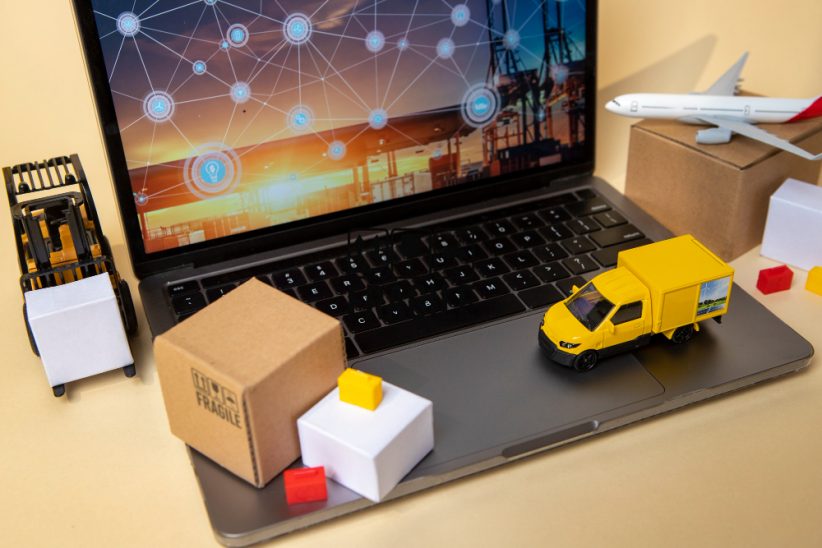Futureproof Your Supply Chain: Top Logistics Trends Every Business Needs to Know in 2024
- By RM
- January 29, 2024
- 43
- environmental, logistics, Outdoor
As a supply chain leader, what logistics trend will you adopt to hold down your foot in the industry in 2024? The ever-evolving landscape demands adaptability for staying competitive, especially in the face of challenges like the escalating pace of deliveries, the surge in e-commerce, and the scarcity of skilled labour.
Let’s explore emerging trends, understanding how they promise to reshape and propel the logistics industry into the future.
Digitalisation
The era of digitalisation, once a distant concept, is now a tangible reality, transforming the landscape of the shipping industry. Companies within shipping and logistics are swiftly integrating advanced digital tools like Artificial Intelligence (AI) and blockchain visibility to enhance real-time tracking and amplify supply chain visibility. A monumental shift toward paperless shipping is also underway. Golden Alchemy International is at the forefront of this digital evolution, wholeheartedly embracing these cutting-edge tools and techniques to elevate and optimise our service delivery.
Sustainability
Amid climate change, frequent natural disasters are more than reason enough to turn to sustainable practices that will slow the process and save the environment from further degradation. Global shipping regulators have implemented regulations like the International Maritime Organisation’s “IMO 2020” rule, requiring cleaner fuel and retrofitted emissions scrubbers installed on older vessels.
In recent years, the private sector has taken significant strides in advocating for zero-carbon shipping by 2050, with some aiming for even earlier milestones. Pioneering industry leaders like Maersk have set a precedent, overseeing the construction of new vessels designed with a focus on electricity and alternative fuel sources.
Logistics companies prioritise reducing carbon emissions, minimising heat and using renewable energy sources to gain a competitive edge. However, the journey toward entirely green logistics remains a work in progress.
Last Mile Delivery
The final steps of a package’s journey, known as last-mile delivery, may be short in distance but are often long in complexity and cost. This critical stage, connecting your distribution centre to customer doorsteps, can make or break the entire delivery experience. While traditional methods face hurdles like traffic congestion, inefficient routing, and failed attempts, innovative
Drones zipping through the air, autonomous vehicles navigating city streets, and smart lockers offering secure and convenient pick-up options are trending in the shipping and logistics industry. These technologies optimise routes, reduce delivery times, and improve customer satisfaction. By embracing such advancements, you can slash delivery costs. Boost customer delight with faster deliveries, real-time tracking, and flexible options like locker pick-up options. Not to mention that you’ll be gaining a competitive edge.
To maximise the benefits of this trend, you can join major companies partnering with fulfilment specialists to leverage their expertise, technology, and established delivery networks for a seamless last-mile experience. Or, build your delivery fleet to gain greater control and flexibility, but be prepared for significant investment and operational overhead.
Supply Chain Resilience
Supply chain resilience is the ability of a business to withstand and adapt to disruptions in its supply chain. This has become increasingly important in recent years as businesses have faced many challenges, such as natural disasters, trade wars, and pandemics.
No longer can businesses rely on fragile, single-source setups. Instead, they diversify suppliers, build redundancies, and leverage technology for real-time visibility and adaptability. From natural disasters to trade wars, the goal is to minimise hiccups and keep products flowing to customers. By investing in resilience, businesses survive disruptions and thrive in uncertainty. A resilient supply chain can minimise the impact of these disruptions and continue to deliver products and services to customers.
Cybersecurity
As supply chains become increasingly interconnected and reliant on digital technologies, they become more vulnerable to cyberattacks. From ransomware crippling operations to data breaches exposing sensitive information, the potential consequences are no longer theoretical. This is why Cybersecurity emerges as a top-tier concern.
The logistics industry will likely invest heavily in cybersecurity to protect sensitive data, safeguard cargo from theft and prevent cyberattacks that threaten operations. The future of logistics is undoubtedly digital, but it must also be secure. By prioritising cybersecurity and taking proactive measures, logistics companies can safeguard their operations, protect sensitive data, and build trust with their customers and partners. Remember, in the fast-paced world of logistics, failing to prioritise cybersecurity is no longer an option; it’s a recipe for disaster.
It’s time to batten down the digital hatches and navigate logistics’ exciting yet security-conscious future.
In this blog, we’ve merely scratched the surface of the intricate tapestry woven by these trends. We’ve glimpsed the dawn of automation, marvelled at the agility of resilient supply chains, and grappled with the ever-present shadow of cyber threats. But remember, dear reader, this is just the opening act. As the year unfolds, these trends will undoubtedly evolve, intertwine, and birth entirely new ones, keeping us all on the edge of our seats.
So, buckle up, logistics enthusiasts! The ride promises to be exhilarating, challenging, and, most importantly, transformative. Stay curious, stay informed, and above all, stay adaptable.
Follow us as we update you on the latest trends, news and tips on easily navigating the shipping and logistics industry. Let’s lead the world of the supply chain together!


